Quick Links
I am a sucker for watching animal videos on youtube and the dodo. This stuff can get me in the best of moods so quickly and get me crying within seconds.
Now, I am a grown man and may even look tough on the outside…
Yeah, but I am not. I am a total softy, and that’s why this whole changing the world for the better means so much to me.
Today, I want to educate you on the impact that Ghost Nets have on our environment and what people are already doing to solve this problem.
What are ghost nets?
Every year, more than 25,000 fishing nets are reported lost or discarded. Most of the time, these are broken nets that are no longer good for fishing.
This creates a massive problem since the modern fishing net isn’t made from natural fibers anymore but from nylon.
Nylon can not biodegrade and stays in our oceans for hundreds if not thousands of years. (it eventually turns into microplastic.)
Once these nets are dumped into the sea, we call them ghost nets, and they continue to kill marine life.
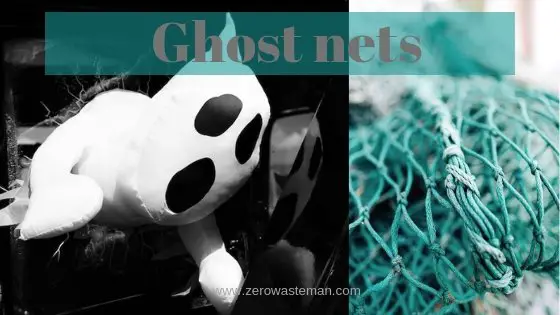
Get it Ghost Net?
Ghost nets have the properties to be very sturdy and buoyant. Many of these nets continue to travel via the ocean’s currents or float at the surface for years and decades. Even though there are areas where fishing with nets is not allowed, scientists find ghost nets in those regions.
Some plastic fishing gear, for example, monofilament-gill-net, is almost invisible in water. It is also extremely strong and very resistant to biting and chewing by trapped animals. Every year, they are responsible for trapping and killing millions of marine animals, including sharks, rays, bony fish, turtles, dolphins, whales, crustaceans, and birds.
To top it up, they also impact shorelines’ beauty, resulting in expensive cleanups and financial loss for the tourism and diving industry.
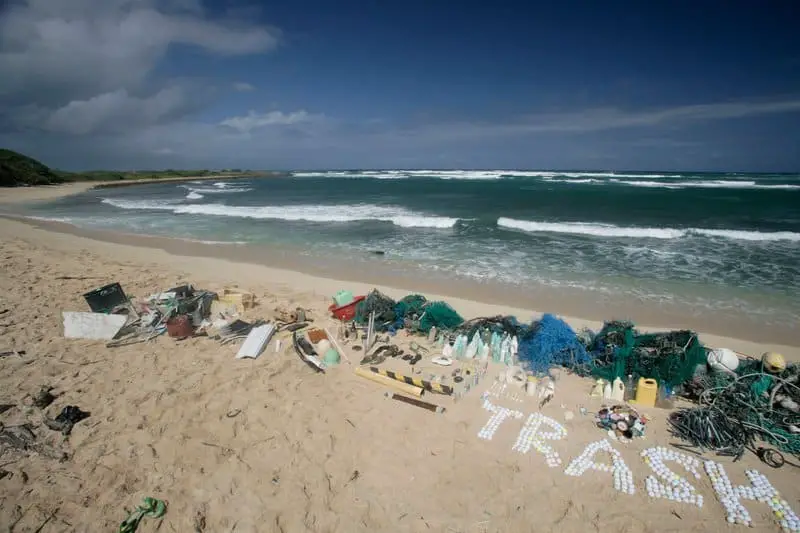
Assorted marine debris, including the word ‘Trash’ spelled out with golf balls, is displayed on Kahuku beach. This is part of the Ocean Defenders Campaign in which the Greenpeace ship Esperanza MV sails to the Pacific Ocean, sometimes referred to as the North Pacific garbage patch, to document the threat that plastic poses to the environment and sea life.
Definition:
Ghost nets are fishing nets that have been left or lost in the ocean by fishermen. These nets, often nearly invisible in the dim light, can be left tangled on a rocky reef or drifting in the open sea. They can entangle fish, dolphins, sea turtles, sharks, dugongs, crocodiles, seabirds, crabs, and other creatures, including the occasional human diver. Acting as designed, the nets restrict movement, causing starvation, laceration and infection, and suffocation in those that need to return to the surface to breathe. – wikipedia
Ghost fishing continues
Since we now know that ghost nets can travel vast distances from their origin, they have different effects on marine life.
1. They continue to kill marine life through entanglement
2. They introduce parasites and invasive species into reef environments
3. Entangled fish often act as bait and attract larger fish also to become entangled
4. The drifting ghost net might eventually become so dense that it sinks to the bottom, where it smothers around a reef
5. Sometimes, the nets become light again due to fish eating the entangled animals and natural decomposition, leading to the net floating back up again.
Why do ghost nets end up in our ocean?
- bad weather conditions
- catch overload
- poor gear maintenance
- snagging on the bottom
- the high cost of retrieval
- fishery conflicts or vandalism
- no access to recycling facilities
- illegal fishing activities
- destructive fishing techniques
It is easy for us not to worry about what is inside the ocean because we can’t see what’s going on in the deep blue. But we can no longer look away. The oceans are changing, and without a healthy ocean, we don’t exist.
So many of us rely on the fish in the ocean to feed our families. It seems like we see the ocean as this never-ending source of food, but this is not the case.
Over the past half-century, we’ve witnessed a staggering loss – over 50% of our vibrant reefs have vanished, and our fish population has diminished by more than 90%. As the ocean increasingly acidifies, it’s an urgent wake-up call. Simply put, our future is in jeopardy if we don’t enact change.
This is the part where it gets cool.
So far, there have been many negative things about ghost nets. Though they make up 10% of plastic in the ocean, plenty of people make a difference daily.
1.
Take the Philippines, for example; the people there rely on the oceans. Fish is their main food supply. However, discarded fishing nets have become a significant problem. The reefs are dead, and the fish are getting less and less.
Fishers now collect old nets to be recycled into carpet tiles to earn a living. The company Net-works is helping those communities. Check out their great work and how it helps people there.
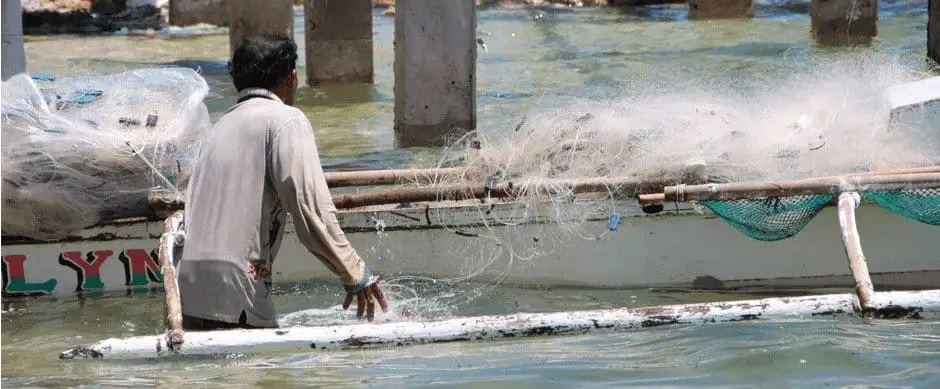
2.
One of my favorites is bureo. They turn the discarded fishing nets into sustainable skateboards and games, like the famous Jenga and a sustainable frisbee. But my favorite is these slick-looking sunnies. They come in three different shapes and many different lenses, all made from recycled ghost nets. Pretty cool, right?
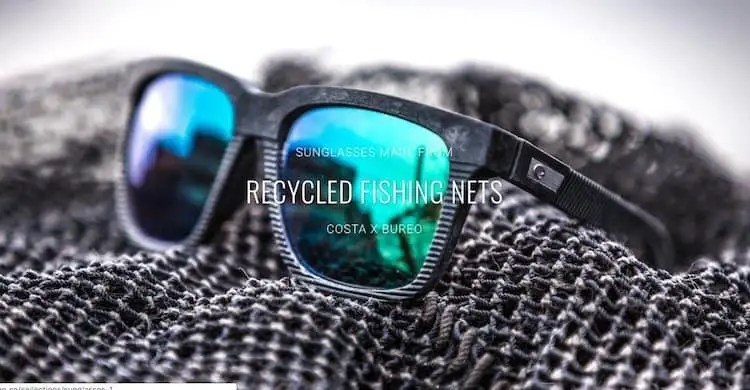
3.
This one is more for your girlfriend… the company is actually called that, and they use ghost nets to make leggings, bras, and tops. Although you would have to use the guppyfriend laundry bag to keep the microfibres out of our oceans, it is a pretty cool idea.
4.
Then there is Healthy Seas, a non-profit created by two businesses that have joined forces to tackle marine litter. Their primary focus is on ghost nets, and once they have collected them, they don’t just throw them in landfills.
No, they turn the ghost nets into new nylon yarn called ECONYL, which is then made into swimwear, carpets, and socks.
Find the best eco-friendly swimwear in this article.
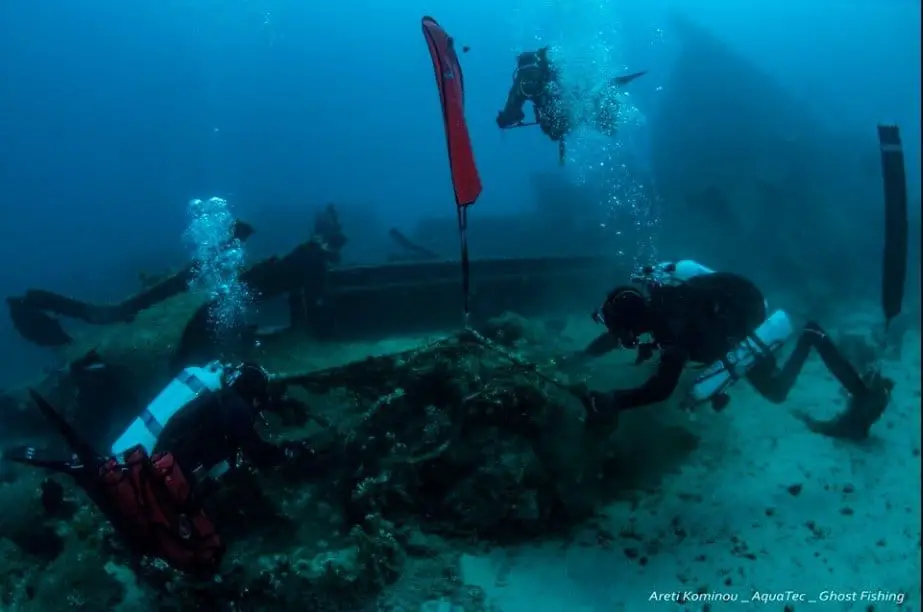
5.
Would you like to buy a bracelet and help clean the oceans from ghost nets? Here is Planetlovelife making bracelets and earrings out of recycled nets.
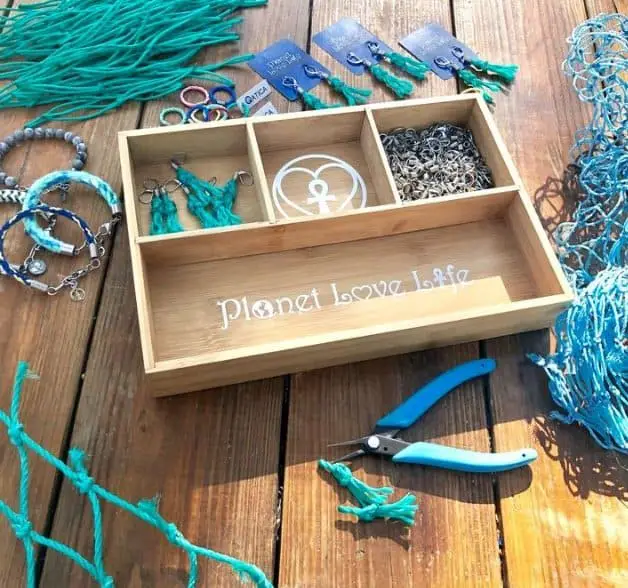
6.
What about ghost net art?
The Australian museum displays some of the artwork created by indigenous Australians and Torres Strait Islanders.
Several Aboriginal and Torres Strait Islander communities are now turning these destructive materials into works of art, which are raising awareness for this terrible issue and reflect the struggle that communities face in protecting the marine environment. While nets were once either simply dumped or burned after being retrieved, the varying kinds of net are now viewed in a different light. Some kinds of the net are particularly desired by artists for their color and physical qualities and are turned into stunning sculptural works of art, as well as smaller items. ~ Australian museum.
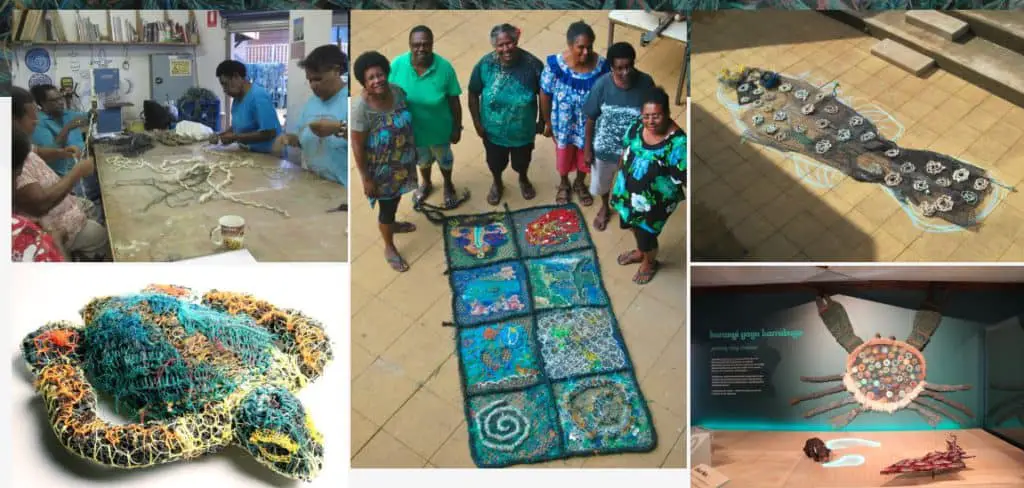
If you like what you read, make sure to leave us a comment and share your new glasses or your new bracelet on Instagram with our hashtag #zerowasteman
P.S.: I am not an affiliate with any of these products. I think they are doing a good job, hence why I promote them here. If you want to support the zerowasteman, subscribe and share our content.
Thanks, and until next time.
